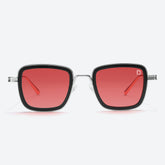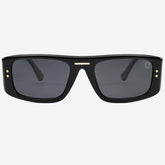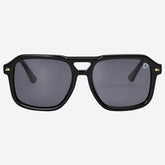How Much Do Glasses Cost?
Eyeglasses have become a part of our everyday lives, whether for fashion or they're medically prescribed. As fashion pieces, they can be just what your outfit needs to step up your overall “steeze.” You can even prefer sunglasses instead because of the extra advantage of how they protect your eyes from the sun’s UV rays. However, one question that’ll always run through your mind any time you wish to buy a new pair of glasses is, “How much do glasses cost?”. This article will discuss this in detail so you know what to expect as you shop for your next pair of eyeglasses.
How Much Do Glasses Cost?
The prices of eyeglasses vary depending on different factors like the materials, the prescription, and where you buy them. However, according to statistics, the average cost of prescription eyeglasses ranges from $100 to $400 per specs. Reading glasses don’t cost as much, but they can still set you back as much as $100, depending on various factors. At Dollger, our prescription glasses cost as little as $29, and our reading glasses go for as low as $42.
Factors That Influence the Cost of Prescription Glasses

Now, let's look at factors that determine how much glasses cost in detail.
Frame Material
Frames for eyeglasses come in different designs and are made with different materials. Each has its pros and cons, and glasses made using these frames also vary in price. Here are some common frame materials.
Metal
The three most popular metals used for making frames are titanium, aluminum, and stainless steel. Aluminum frames are lightweight, durable, flexible, and corrosion-resistant. Steel frames are also lightweight, though heavier than aluminum, and they’re long-lasting. Titanium frames are lighter and stronger than the other two metals. They are also hypoallergenic (don’t cause allergic reactions).
Plastic
While there are frames made of lower-quality plastics, we’ll focus on two popular high-quality choices: nylon and acetate. Nylon frames are very flexible and bendy, which makes them impact-resistant. This makes them a popular choice for sporting activities. Acetate frames are more rigid but are sturdy and long-lasting. They’re also hypoallergenic.
Combined materials
Many glasses come with frames made with a combination of different materials. For example, the rims may be plastic, while the temples are made of metal. This usually happens because each manufacturer tries to create unique, eye-catching designs.
Lens Type
This is the most common determinant for the price of any eyeglasses. If your desired specs’ lenses are made of regular clear materials like plastic or glass, with no corrective purpose for your vision, they are likely to be cheap. However, if your eyeglasses contain prescription lenses that correct your vision one way or another, the price will probably be on the higher side.
Also, eyeglasses that have single-vision lenses (lenses that correct vision at only one particular distance) are cheaper than bifocal or progressive lenses. People with farsightedness (hyperopia) or nearsightedness (myopia) require only single-vision lenses. Multifocal lenses are for people with presbyopia (age-related farsightedness), and they’re usually more expensive.
Lens Material
The lens material also plays a major role in the price of eyeglasses. The cheapest materials are plastics, but they are also the quality. Polycarbonate lenses are better and more common. They’re lighter than plastics and are usually thinner. They’re also impact-resistant, making them not as fragile. This makes them a superb choice for adults and kids. Polycarbonate lenses also protect against UV radiation. However, they’re slightly more expensive than regular plastic lenses.
If you want even thinner lenses or you require strong prescription lenses, high-index lenses are the best option for you. Because they have magnifying power, they don’t need to be as thick as polycarbonate lenses. But they’ll cost you more than polycarbonate lenses.
Lens Enhancements
You can request extra enhancements for your lenses that’ll make them last longer or serve you better. There are several enhancements or treatments available for lenses, and we’ll mention them below. But keep in mind that these will make your eyeglasses cost more.
- Scratch-Resistant Treatment: these will protect your lenses against abrasions and scratches. If your lenses become too scratched, they can hinder your vision rather than enhance it.
- Polarized Lens Coating: this is usually for sunglasses, and it allows the lenses to filter off some of the sunlight passing through. This reduces glare and increases contrast.
- Anti-Reflective Coating: this also reduces glare but achieves this by reflecting and scattering most of the light instead of allowing it through. This is especially beneficial when you’re driving at night.
- Ultraviolet (UV)-Blocking Treatment: this protects your eyes from UVA and UVB rays, which are harmful to your eyes.
- Hydrophobic Coating: this ensures water doesn’t stick to your lenses. Moisture on lens surfaces hinders clear vision.
- Light-Responsive Treatment: this makes the lenses photochromic. Photochromic lenses turn dark in bright light. This allows them to absorb most of the light passing through. They’re beneficial for people who are extra sensitive to light.
- Blue-Light-Filtering Coating: this filters blue light from electronic screens, which causes digital eyestrain and headaches.
Retailer markups
When you buy products from retailers, they usually offer these products at higher prices than those set by the manufacturers. This is logical since these “middlemen” also need to make a profit. However, that means you have to pay extra whenever you buy eyeglasses from retail outlets, whether physical or online. You can avoid this by simply buying eyeglasses online from manufacturers directly, like visiting the Dollger eyeglasses collection. One statistic that drives this point home is this one from Consumer Reports, which shows that the average cost of eyeglasses shopped online is only $91, compared to the $234 spent buying them in physical stores.
Influence of Luxury Brands
Luxury brands have a penchant for overpricing their products way more than they should cost based on the cost of production. It’s no secret that most luxury brands will manufacture quality sunglasses and sell them at prices that make them over five times the total cost of production. You can avoid paying so much by opting for eyeglasses of similar quality from other brands like Dollger and still keep your fashion game on point.
How to Save Money on Prescription Eyeglasses?

There are several ways to get a pair of prescription glasses in whatever style or design you wish and still save money. Here are some of them below.
Use Your Vision Insurance
If you have vision insurance, it will go a long way in reducing the cost of getting yourself a new pair of prescription glasses, especially if the insurance covers the cost of purchasing eyeglasses. Reach out to your insurance company to find out what your vision insurance policy covers. Many online eyewear manufacturers and retailers also collaborate with major insurance companies, which means you can shop with them using your insurance policy.
Use Your HSA or FSA
If you have a health savings account (HSA) or flexible spending account (FSA), these can come in handy when you want to buy your prescription eyeglasses. Eye examinations, contact lenses, and prescription eyeglasses are all FSA and HSA-eligible expenses. That means you can pay for them with your pre-tax earnings. You can contact your bank for more information on this.
Replace Your Lenses
You can also save costs by simply ordering new lenses and placing them in old frames instead of buying fresh glasses entirely. This makes sense if you already have prescription glasses but need to change them. The lenses are usually the more expensive part of eyeglasses, but by ordering new lenses alone, you still save substantial money.
However, the best practice is to replace both the lenses and the frame because the frame would have suffered wear and tear from prolonged use. The wear on your frame may not be obvious when you order the new lenses alone. But you may find yourself needing to replace the frame down the line when the damage becomes obvious. You may end up spending more buying the lenses and frames separately than you would if you purchased a new pair of eyeglasses in the first place.
Seek Combo Deals
Some manufacturers and retailers often offer discount deals when you buy multiple products from their brands. So, you can order a combo of eyeglasses and contact lenses, or you can even buy two pairs of glasses with different designs or one prescription eyeglasses and one pair of sunglasses. At Dollger, we offer a deal for you to buy two products and get an extra product for free.
Seek Assistance Programs
Finally, there are several assistance programs in the country to help you cover the cost of getting your prescription glasses. Simply apply for them, and they’ll cover a part or the full cost of the glasses.





